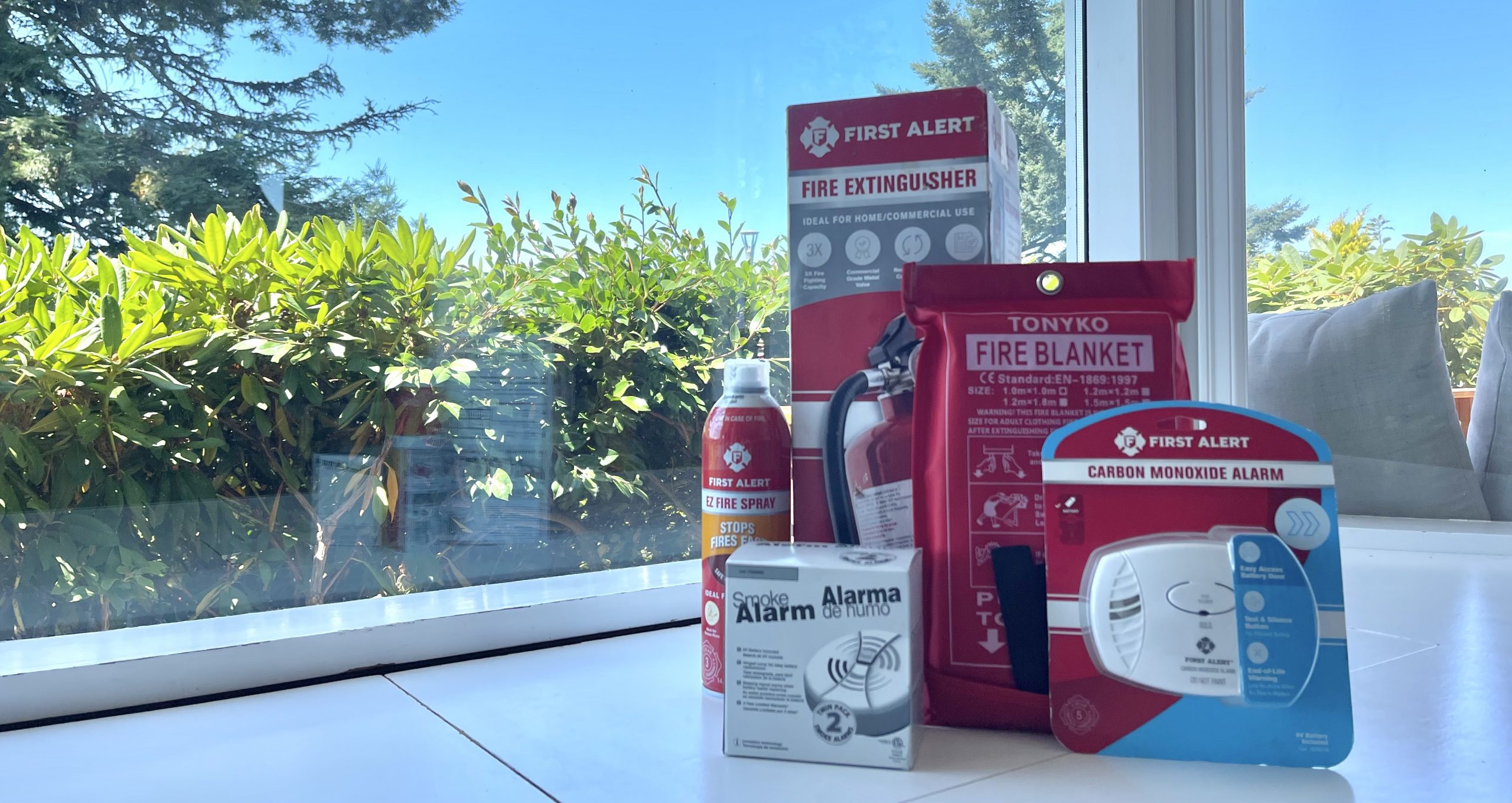
Last week, there was a fire in a building that we pass on our way to summer camp. The fire was so bad that the building has been boarded up, with smoke stains and melted siding along the exterior, and it looks like all the residents have had to move out. As I drive by every day, I think about fire safety for homeowners, so I put together this checklist to help you prepare your home and reduce the risk of fires.
- Know the main causes of fire in homes and how to prevent them:
- Electrical fires – Regularly inspect electrical systems, outlets, cords, and appliances for damage. Avoid overloading outlets and consult a qualified electrician for repairs or upgrades.
- Cooking- Be vigilant when cooking. Never leave pots and pans unattended and keep flammable items away from the stove. Use a timer to monitor cooking times. Keep baking soda, a fire blanket and or a fire extinguisher near to the stove – do not attempt to put out a grease fire with water.
- Heat systems – keep flammable items away from heat sources. This includes wood furniture next to forced air vents or electric heaters (recommended distance of 3 feet away). Do not store flammable materials in garages near heaters or furnaces. Maintain your heating system by scheduling regular service to clean and inspect furnaces, chimneys, gas fireplaces, and other heating equipment.
- Cigarettes and Candles – always extinguish any smoking device or candles before leaving a room. Consider using flameless LED candles for a safer alternative to candles.
- Install Smoke Alarms and Carbon Monoxide Detectors. Place smoke alarms on each level of your home and inside all bedrooms. Install carbon monoxide detectors near sleeping areas and fuel-burning appliances. Replace batteries and test all alarms twice a year (spring forward/spring back) to ensure they are working properly.
- Identify your egress routes. Look at and identifying multiple escape routes from every room. If you sleep above group level, make sure you have escape ladders with the proper length to get you safely to the ground from an above ground window. If you sleep in a basement, ensure you have an operable window in addition to a door you can escape through, in case one route is blocked by fire.
- Educate your family on fire safety. Teach them about responsible behavior around fires, how to call 911, escape routes, and a designated meeting place. Practice helps to limit panic in an emergency. Conduct regular fire drills with your family to reinforce the escape plan and designated meeting point outside.
- Buy some fire extinguishers. Keep a fire extinguisher in the kitchen, garage, and on each floor of your home in a designated spot. Educate your family on proper use. Consider fire sprinkler systems and fire-resistant doors for added protection. We were recently gifted a fire blanket for cooking fires, which we keep under the kitchen sink (thanks Mom and Dad!
- Conduct regular home safety inspections to identify potential fire hazards and address them promptly. Test smoke alarms and detectors twice a year.
- Develop and document an emergency contact list, including local fire and rescue services.
- Secure your important documents and valuables. Use a fireproof safe or off-site storage for important items like Wills, Marriage, and Birth Certificates, etc. With the climate-crisis-related risk of urban forest fires and the increased frequency of red-flag warnings, consider consolidating your important documents in a in a go-bag in case you need to evacuate your home with little warning.
Being proactive with fire safety awareness is the best way for responsible homeowners to protect your life and property. By following this checklist, you can reduce the risk of fire in your home. Please let me know if you found this helpful or if I missed anything and I’ll add it!
 Facebook
Facebook
 X
X
 Pinterest
Pinterest
 Copy Link
Copy Link